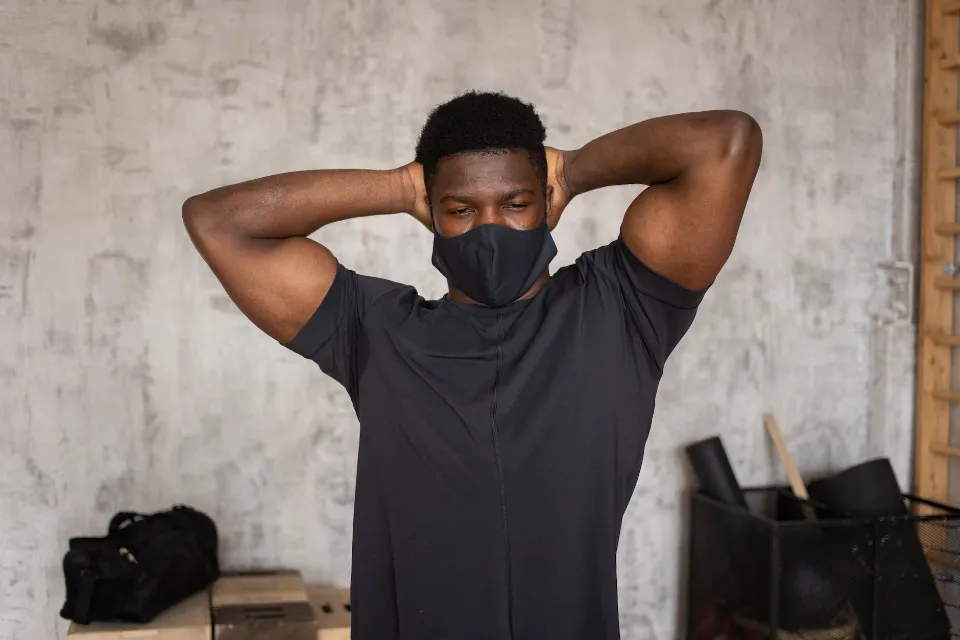“Safe fall” sounds like an oxymoron – if you’ve ever fallen, you know that nothing is safe.
Even a simple fall from a standing height can result in serious injuries. Your age, health, and level of fitness may have an impact on how serious these injuries are.
If you do fall, there are methods that anyone can use to lessen the force and minimize damage. Here are some tips – on what you can do to “fall safely”.
Read more: What to Do If An Elderly Person Falls Down: a Helpful Guide – Elder VIP
How to Fall Safely?
#1 Protecting the Head is the Most Important
Your head is the body part that you need to protect in a fall more than any other. Injury to the head can be fatal or very serious. Make sure you prioritize protecting your head as you fall by properly positioning it.
- Lower your head and tuck your chin.
- If falling down, face first, turn your head to the side.
- For added defense, raise your arms to your head. Put them in front of your head if falling forwards or behind your head, if falling backward.
- A dangerous and potentially fatal bleed inside your skull can happen if you take blood thinners or anticoagulants, fall, and hit your head. Make an appointment with your doctor, who might advise you to visit the hospital for a CT scan.

#2 Relax as Much as Possible
As soon as you begin to fall, your body tenses up involuntarily. It may seem difficult to avoid tension because it knows what will inevitably happen next. A relaxed body, however, is less likely to sustain serious injuries, according to Philabaum.
For instance, if your arms or legs are locked, you won’t be able to cushion the blow the way you could with bent elbows or knees that can absorb shock. If you maintain straight arms and legs, you might even break a bone. Also, refrain from clenching your fists.
#2 Turn Around When You Fall
If you are falling straight forward or straight backward, try to turn your body so that you land on your side. Falling directly on your back can cause serious injury to it. Arms, faces, and the head can all be hurt in a frontal fall. By landing on your side you can reduce the chance of injury from high distances (for example, one-way vertical paths).
#4 Curled Arms
Maintain a bent posture with your arms and legs. It might be tempting to use your arms to fully catch yourself as you fall. However, harm can result if you land with your arms extended and take the full impact of the fall with them. As you fall, try to keep your arms and legs slightly bent. It is possible to break both your wrists and arms when you land fully on your arms in an effort to catch yourself.
#5 Homeopathic Rolling
As soon as you fall, your natural instinct is to stop. According to Philabaum, maintaining momentum is actually safer. This entails rolling instead of jerking into a stop, but rather ducking into one. By doing this, you disperse the impact across your body as opposed to concentrating it in one area.
#6 Dispersing the Impact
Distribute the fall’s force evenly. A big part of falling safely is to spread out the force of the impact over a large area of your body. The majority of the damage will be dealt to that area if you fall on just one spot. Spreading out the impact lessens the possibility of a serious injury to just one area of the body.
Fall Prevention
Keep Exercising
Falls can be greatly reduced with regular physical activity. With the approval of your healthcare provider, you may consider doing activities such as walking, water exercise, or Tai Chi (a gentle exercise that uses slow, graceful, dance-like movements). By enhancing the body’s strength, balance, coordination, and flexibility, these exercises lower the risk of falls.
Wear the Right Shoes
As part of your fall prevention strategy, think about switching up your shoes. You run the risk of slipping and falling if you wear shoes with smooth soles, high heels, or flimsy slippers. Similar rules apply when walking in socks. Wear sturdy, flat shoes with non-slip soles that fit comfortably. Additionally, wearing comfortable shoes can lessen joint pain.

Improve Home Furnishings
Check your home for any dangers that could result in a fall secure your house.
Clear walkways of boxes, newspapers, phone wires, and electrical cords.
From areas that are frequently walked on, take coffee tables, magazine racks, and plant shelves down.
Secure loose carpeting with double-sided tape, staples or non-slip padding, or remove loose carpeting from your home.
Use Appropriate Safety Equipment
Take the necessary precautions to ensure your safety whenever you are performing any task that calls for the use of a ladder or other similar equipment. Read any operating manuals or safety instructions to make sure you are using the equipment properly. Always ensure that a ladder or step stool is secure and functional before using it.
Be Aware of Medications That Might Affect Your Balance
Some medications may make you feel lightheaded or sleepy, which could increase your risk of falling. You should discuss your medications with your doctor because sometimes the side effects can result from the interaction of several medications. You might be able to get another prescription from her.
Final Thoughts
Overall, falls are a part of everyday life, but there are precautions you can take to reduce injuries. The best way to prevent injuries from falls, however, is to avoid falling, which calls for increased exercise and attention to daily walking habits.
FAQs
How Fall Can You Fall Without Getting Hurt?
People usually survive falls from a height of 20-25 feet (6-8 meters), but above that, things get very deadly very fast. A 2005 study in Paris examined 287 fall victims and discovered that falls from 8 stories (30 meters) or higher were always fatal.
Why Are Humans Afraid of Falling?
Studies have shown that people afraid of heights or falling have poor postural control, especially in the absence of strong visual cues. These people heavily rely on their vision to control their balance and posture.



